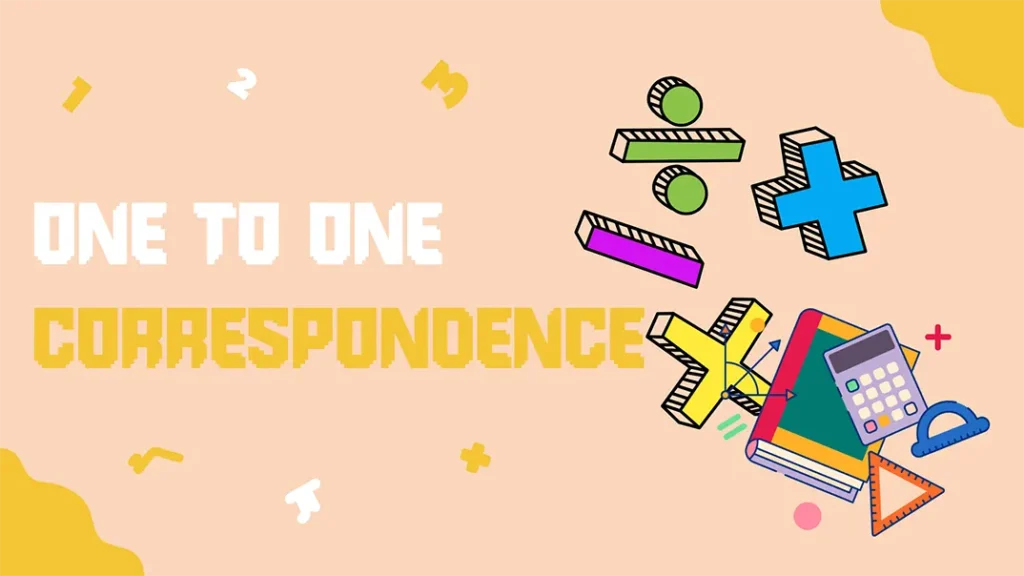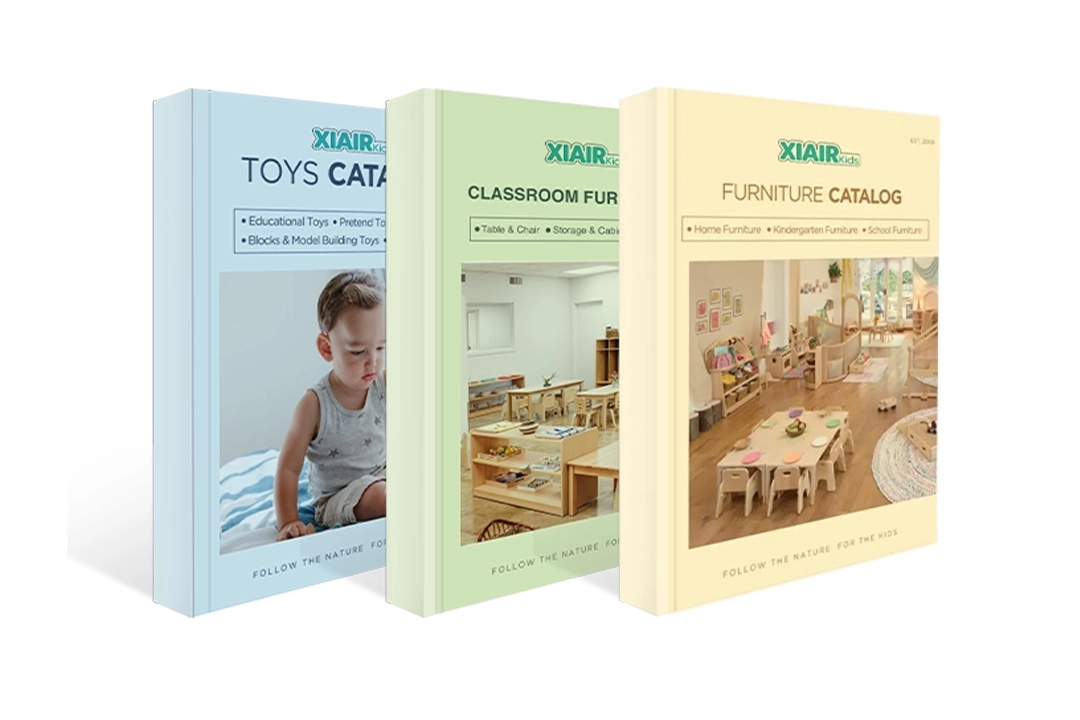Have you ever noticed a child skipping numbers when counting or pointing to two objects while saying just one number word? These small errors may seem harmless, but they often signal a gap in one to one correspondence. Without mastering it, children will struggle with accurate counting, understanding quantities, and even more advanced math concepts later on. So, what exactly is one to one correspondence, and why is it so important in early childhood education?
One to one correspondence is the ability to pair each number word with exactly one object, ensuring accurate counting and quantity recognition. By introducing hands-on activities, visual supports, and consistent practice, teachers and parents can help children internalize this skill naturally. From counting blocks to distributing snacks, every interaction can be an opportunity to strengthen one to one correspondence in fun and meaningful ways.
In this complete guide, you’ll find a clear roadmap for making one to one correspondence a natural and enjoyable part of every child’s learning journey, laying the foundation for long-term math success.
What Is One to One Correspondence in Math?
One to one correspondence is the ability to match each object in a group with exactly one number word, numeral, or other corresponding symbol. This early math skill allows children to count accurately, understand the concept of quantity, and lay the groundwork for later arithmetic operations such as addition, subtraction, and place value.
In early childhood education, one to one correspondence is more than just a counting exercise—it’s a critical thinking skill. It requires children to coordinate physical actions (like pointing or moving items) with cognitive processing (remembering the number sequence) and visual tracking (not losing place in the count). This combination of motor skills, memory, and attention lays the groundwork for accurate number sense, arithmetic, and even more complex mathematical reasoning later on.
Through one-to-one correspondence, children learn that:
- Each object counts as one unit.
- Number words are always said in the same, correct sequence during counting.
- The final number word represents the total quantity (cardinality).
- The order in which objects are counted does not affect the total, as long as each is counted once.
Đừng chỉ mơ ước, hãy thiết kế nó! Hãy cùng trò chuyện về nhu cầu nội thất tùy chỉnh của bạn!
Benefits of One to One Correspondence in Early Childhood Education
One-to-one correspondence is a cornerstone of early math understanding. It connects number words to real quantities and supports logical thinking. Beyond math, it also strengthens fine motor skills, attention span, and problem-solving abilities. These benefits extend into multiple areas of learning, making one-to-one correspondence an essential focus in early childhood education.
1. Builds a Strong Foundation for Math Concepts
One to one correspondence is the gateway to understanding cardinality, addition, subtraction, and place value. By learning to match one object to one number word, children begin to grasp that numbers represent fixed amounts. This foundational concept allows them to progress confidently to more complex operations later in school.
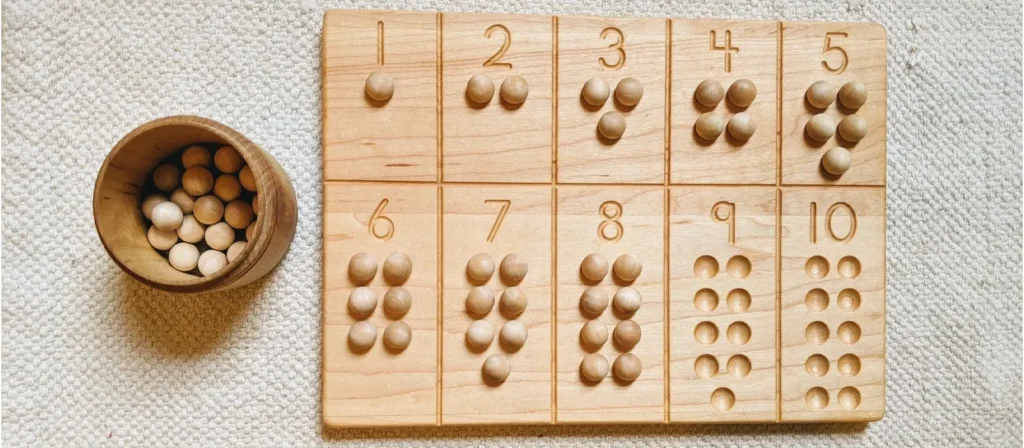
2. Enhances Problem-Solving and Logical Thinking
When children engage in one to one correspondence activities, they practice observing, matching, and verifying accuracy. These steps involve reasoning skills, such as recognizing patterns, identifying errors, and finding solutions. Over time, this strengthens their ability to think logically and approach problems systematically.
3. Improves Attention and Concentration
Counting each object accurately in one to one correspondence requires sustained attention and careful tracking. Children must stay focused when pointing to blocks, lining up toys, or moving counters. This process develops their ability to concentrate, which is vital for all areas of learning.
4. Supports Fine Motor Development
Many one to one correspondence activities involve manipulating small objects, turning pages, or placing items in order. These actions refine hand–eye coordination and finger control, which are also essential for writing, drawing, and self-care tasks such as buttoning clothes.
5. Encourages Confidence and Independence in Learning
When children master one to one correspondence, they feel more capable and in control of their counting skills. This confidence often translates to other learning areas, encouraging them to explore new challenges independently and develop a positive attitude toward learning.
One to One Correspondence vs Rote Counting
Although one-to-one correspondence and rote counting are both early math skills, they are not the same, and understanding the difference is essential for teaching young learners effectively.
| Diện mạo | One-to-One Correspondence | Rote Counting |
|---|---|---|
| Definition | Matching each object to one and only one number word during counting | Reciting numbers in sequence from memory without linking them to objects |
| Skill Type | Combines counting with understanding quantities | Purely verbal memorization |
| Ví dụ | A child places one block in each bin while saying “one, two, three” | A child says “one, two, three, four, five” without looking at or touching items |
| Cognitive Benefit | Builds number sense and connects numbers to real-world amounts | Strengthens memory for number order |
| Application in Daily Life | Setting the table, handing out papers, counting toys | Singing number songs, counting aloud during play |
| Developmental Stage | Typically develops after rote counting | Usually learned before one-to-one correspondence |
| Why It Matters | Ensures accurate counting, prepares for addition and subtraction | Provides the foundation for learning one-to-one correspondence |
Foundational Skills Before Learning One-to-One Correspondence
Before children can successfully master one to one correspondence, they need to develop several foundational skills that prepare them for accurate counting and quantity understanding. Building these skills first ensures that the transition into one to one correspondence is smooth and effective.
- Number Sequence Awareness
Children should be able to recite numbers in the correct order (rote counting). This sequence familiarity gives them the verbal framework to match numbers to objects later. - Object Recognition and Discrimination
They need the ability to identify and distinguish individual items within a group. This helps them avoid skipping or double-counting objects. - Fine Motor Control
Good hand-eye coordination is necessary for children to physically point to, touch, or move objects as they count. Without this, they may lose track of which items they have already counted. - Focus and Attention Span
Sustained attention allows children to complete a counting task without distraction, an essential component of one-to-one correspondence. - Understanding of “Same” and “Different”
Before counting, children should recognize the concept of matching—knowing that one item pairs with one other item, such as one plate for one cup.
Đừng chỉ mơ ước, hãy thiết kế nó! Hãy cùng trò chuyện về nhu cầu nội thất tùy chỉnh của bạn!
How to Teach One to One Correspondence?
Teaching one-to-one correspondence is about guiding children to connect each number word they say with one specific object. It’s not just a math exercise—it’s a skill that requires visual focus, physical coordination, and an understanding of quantity. The most effective teaching blends demonstration, real-life application, and consistent practice.
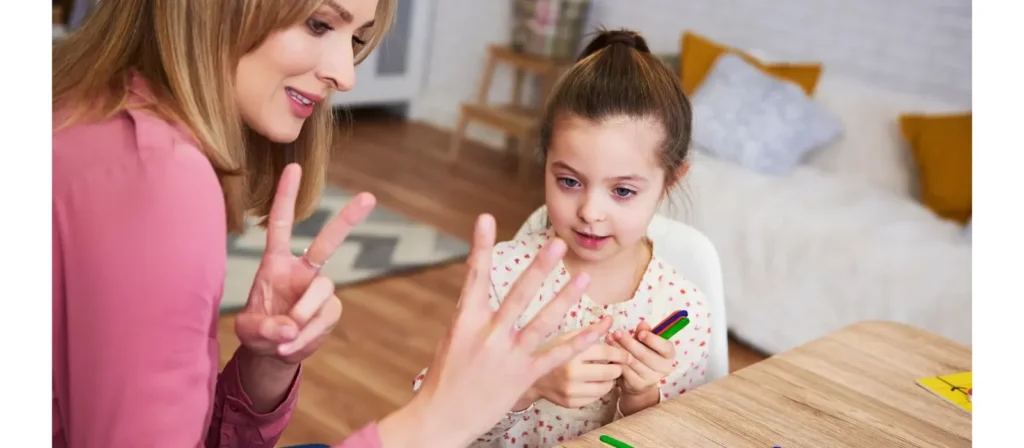
Prepare the Learning Environment
Set up a tidy, low-distraction learning space with plentiful manipulatives and simple organizing tools such as trays, small bowls, and counting mats. When children can see and handle objects clearly, it becomes easier to internalize the idea of matching one action and one number word to one item. Consistent materials and routines reduce cognitive load so attention stays on the one to one correspondence process itself.
Start with Concrete Objects
Begin by using large, easy-to-handle objects such as blocks, toy animals, or beads. Children should be encouraged to touch, move, or point to each item as they count, which helps link the physical object to the spoken number. Start with small quantities like 3–5 items, gradually increasing the count as their confidence grows. This hands-on approach makes the concept tangible, ensuring they understand that each number represents one object.
Model the Process
Begin with a small, visible set of items and narrate the counting process while touching or moving each object in turn. Use clear language like “this object gets one number” and deliberate your movements so children can track what “counted” means. Conclude each demonstration by restating the total and briefly explaining why the total equals the last number word spoken.
Guided Practice with Manipulatives
Invite children to count alongside you, gradually shifting responsibility from your hands to theirs. Encourage them to coordinate speech and action—touching, sliding, or placing one object as they say each number word—to prevent skipping or double-counting. Short, varied practice bouts with familiar objects help the one-to-one pattern become automatic without overwhelming attention.
Link Counting to Cardinality
After every count, ask, “How many altogether?” and highlight that the final number word represents the total quantity. Repeat this conversation, moving often so children connect the act of counting with knowing “how many,” not just saying “how to.” Over time, this consistent emphasis turns cardinality into an expected ending to any counting sequence.
Integrate into Daily Routines and Play
Practice doesn’t need to be limited to lesson time—daily routines offer natural opportunities to reinforce the skill. Real-life repetition builds fluency without feeling like a lesson.
- Place one fork next to each plate at the table.
- Hand one toy car to each parking space on a play mat.
- Give one crayon to each child in a group.
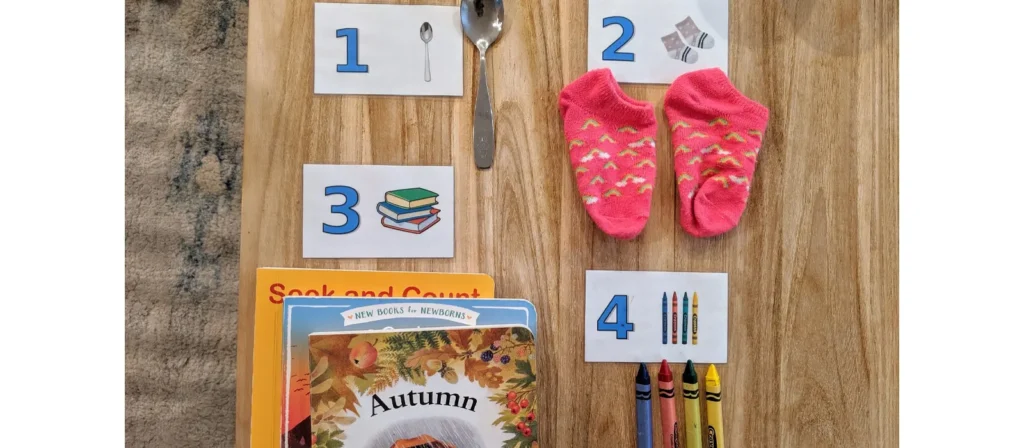
Increase Complexity Gradually
Once children are accurate with small, neatly arranged sets, vary the challenge by spreading items out, mixing sizes or colors, or increasing the quantity. These changes require stronger visual tracking and more careful coordination, which deepens understanding of one to one correspondence. Keep increments modest so success remains frequent and momentum stays high.
Promote Self-correction
When errors occur, prompt a slow recount rather than supplying the answer. Encourage strategies such as moving each counted item aside or pointing with an index finger to mark progress. As children improve, fade prompts so they notice and fix mistakes independently, an essential step toward durable accuracy.
Adjust for Learning Styles and Abilities
Children learn in different ways, so it’s essential to adapt your approach to meet their needs. Adapting lessons ensures that every child, regardless of ability level, has an equal opportunity to grasp one-to-one correspondence. It also makes the learning experience more engaging, reduces frustration, and helps children progress at their own pace while building confidence in their counting skills.
- Visual learners benefit from colorful counters, number cards, and charts.
- Auditory learners respond to counting songs and rhythmic chants.
- Kinesthetic learners need hands-on materials and active participation.
Monitor and Document Progress
Observe whether children consistently match one number word to one object, avoid re-counting the same item, and state the total as the last number counted. Note how well they generalize the skill across materials and settings and whether they maintain accuracy with larger sets. Brief, frequent check-ins guide your next instructional move and make growth visible to families.
Đừng chỉ mơ ước, hãy thiết kế nó! Hãy cùng trò chuyện về nhu cầu nội thất tùy chỉnh của bạn!
Signs a Child Has Mastered One-to-One Correspondence
Recognizing when a child has fully mastered one to one correspondence is essential for knowing when to introduce more complex math concepts. Mastery is not just about counting without mistakes—it’s about showing consistent accuracy, understanding, and flexibility in applying the skill across situations. The following indicators will help you identify true proficiency.
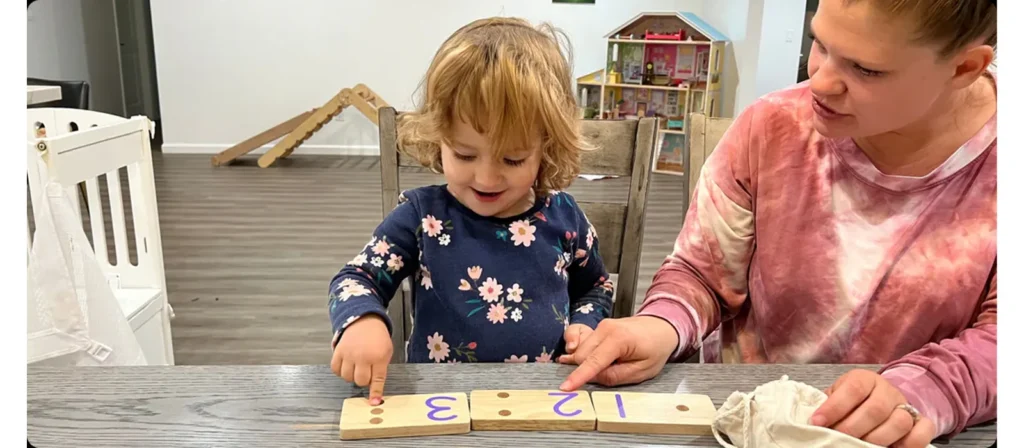
- Consistent Accuracy in Counting
The child can count a group of objects without skipping or double-counting. They reliably touch, point to, or move each item in sync with the number words, even when objects are scattered or unevenly arranged. - Understanding of Cardinality
They know that the last number spoken represents the total number of objects. When asked, “How many?” they can answer without recounting and explain that the final number word tells “how many there are altogether.” - Flexibility Across Contexts and Materials
The child can use one to one correspondence with different objects, sizes, and arrangements—counting toys, steps, beads, or even sounds—showing that the concept works in many situations, not just in a structured activity. - Ability to Self-Correct
If they skip or double-count, they notice the mistake and start over or adjust without help. This shows they have internalized the process and can monitor their accuracy. - Application in Everyday Situations
They use one to one correspondence naturally outside of structured learning, such as giving one snack to each friend, setting the table with one plate per person, or distributing materials evenly during play.
One-to-One Correspondence: Common Mistakes and Effective Solutions
Even though one to one correspondence is a fundamental early math skill, children often encounter difficulties when learning it. Understanding these challenges—and how to address them—helps educators and parents provide targeted support that leads to mastery.
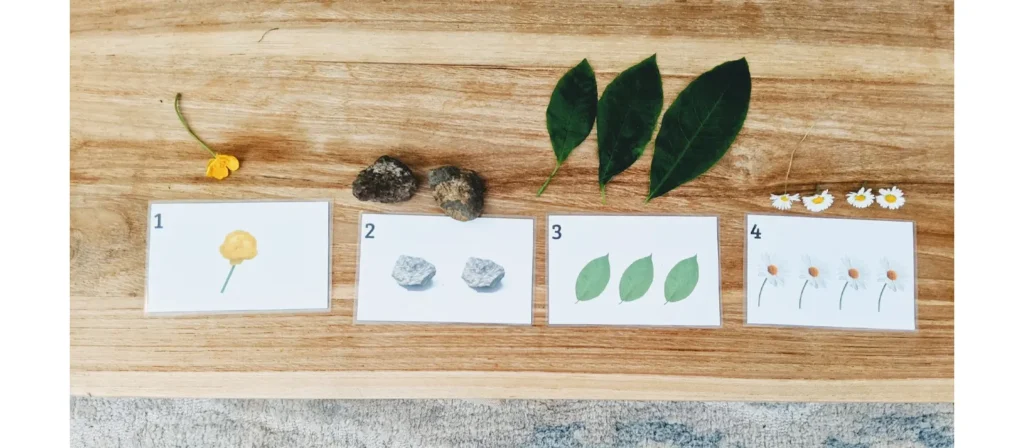
Skipping Objects
Some children accidentally skip an object when counting, especially when items are spaced unevenly or look very similar. This breaks the one-to-one link and results in an inaccurate total. A practical way to prevent this is to encourage the child to touch, move, or place each counted object into a separate space, creating a clear visual cue for what has already been counted.
Double-Counting the Same Item
Double-counting happens when a child points to or touches the same object twice, often because they lose track of their place or get distracted. To address this, use tools like counting mats or individual trays so each counted item has its spot. This physical separation reinforces the idea that each object is counted only once.
Counting Without Matching Actions
Children sometimes recite the number sequence without pairing each number word with an object. This turns counting into rote memorization rather than one to one correspondence. The best strategy is to require a physical action for each count—sliding one bead along a string, giving one block to a friend, or tapping each object as they say its number.
Losing the Number Sequence
If children forget a number or count out of order, their one to one correspondence breaks down. This usually means their rote counting skills need strengthening. Daily activities such as counting songs, rhymes, and call-and-response games can help make the number sequence automatic, supporting accurate counting.
Misunderstanding Cardinality
Some children can count correctly but believe the total changes if the arrangement changes. This shows they haven’t connected counting to quantity. To fix this misconception, count a set together, rearrange it, and then count again to prove the total is the same. Repetition with varied objects helps the child internalize the concept.
Difficulty with Mixed or Irregular Arrangements
When objects are scattered randomly or vary in size and color, children may lose their place while counting. Building up gradually from neat rows to more complex arrangements helps. Encourage them to scan systematically from one side to the other, developing an organized counting path they can apply in any setting.
Đừng chỉ mơ ước, hãy thiết kế nó! Hãy cùng trò chuyện về nhu cầu nội thất tùy chỉnh của bạn!
One to One Correspondence Activities for Preschoolers
Introducing preschoolers to one to one correspondence through structured, engaging activities helps them develop accurate counting skills while making learning enjoyable. These activities combine visual, tactile, and auditory elements so children can confidently match each number word to a single object.
1. Counting Mats with Manipulatives
For this activity, you will need counting mats divided into clearly marked spaces and a collection of small manipulatives such as cubes, buttons, or pom-poms. The mats provide a structured visual guide, allowing children to place one object in each space while counting aloud. This visual and tactile approach supports accuracy, prevents skipping, and helps reinforce the link between spoken number words and physical quantities.
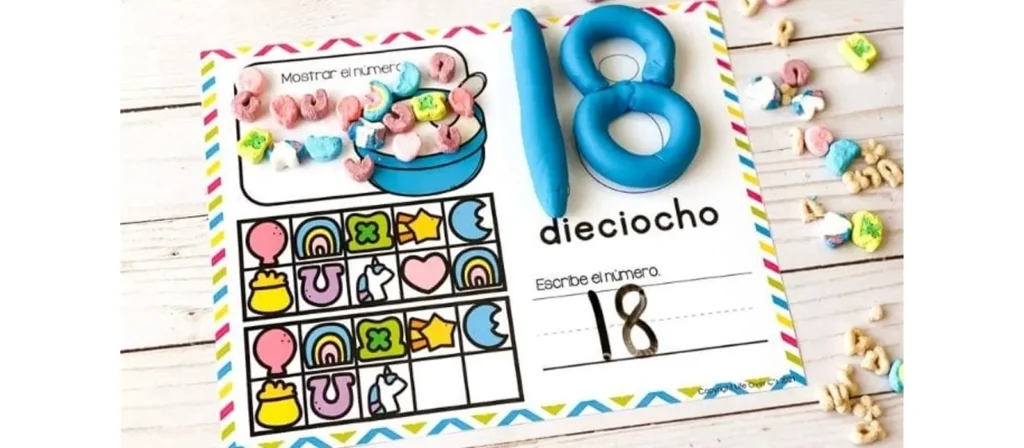
Steps:
- Give each child a counting mat and a set of counters.
- Ask them to place one counter in each space, saying the number word aloud.
- When all spaces are filled, have them count the total together.
2. Peg Board Counting
This activity uses peg boards and colorful pegs to create a hands-on counting experience. The peg board’s evenly spaced holes guide children to insert one peg at a time, encouraging a steady rhythm and preventing double-counting. This method also develops fine motor skills and helps children understand that each number word corresponds to a unique physical object or action.
Steps:
- Provide each child with a peg board and a pile of pegs.
- Demonstrate placing one peg into each hole while counting aloud.
- Have children fill in the board and recount to check accuracy.
3. Numbered Cup and Object Match
You will need cups labeled with numbers and a collection of small items such as beads, buttons, or mini blocks. This activity allows children to match the written numeral with the correct quantity of objects, bridging the gap between number recognition and one-to-one correspondence. Increasing the numbers or using more varied materials can be easily adjusted for different difficulty levels.
Steps:
- Arrange the numbered cups in a row on the table.
- Give children a set of small objects to count.
- Ask them to place the correct number of objects into each cup, saying the numbers aloud.
4. Hopscotch Number Jumps
This movement-based activity combines a numbered hopscotch grid with verbal counting, making it ideal for kinesthetic learners. As children jump into each numbered square, they must say the number aloud, reinforcing the connection between physical action and number sequencing. This activity also improves coordination, balance, and memory while keeping learning active and fun.
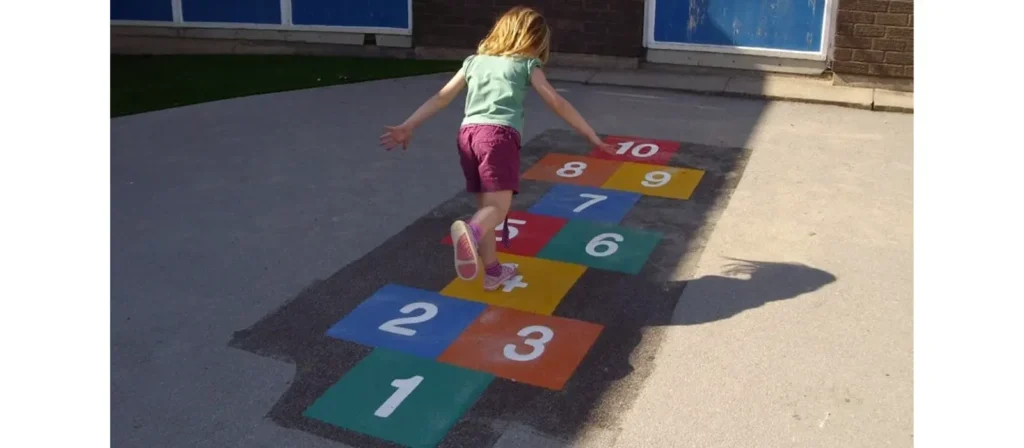
Steps:
- Create a hopscotch grid on the floor with clear numbers in each square.
- Have children take turns hopping into each square in order.
- Encourage them to say the number aloud when they land in the square.
5. Matching Cards and Counters
In this activity, number or picture cards are paired with a set of counters, such as mini erasers, coins, or stones. This strengthens the child’s ability to match symbols or images with actual quantities. The activity is highly adaptable—teachers can use themed cards to match seasonal lessons or children’s interests to maintain engagement.
Steps:
- Lay the cards face up on the table or floor.
- Give children a set of counters to work with.
- Have them place the correct counters on each card while counting aloud.
6. Fill the Ten Frame
This activity requires laminated ten frames and small counters such as beans, buttons, or coins. The ten-frame helps children visualize numbers up to ten, supporting early addition and subtraction concepts. Children reinforce one-to-one correspondence by filling each square one at a time while developing a clear mental image of number structure.
Steps:
- Provide each child with a ten-frame and a pile of counters.
- Instruct them to place one counter in each square, counting as they go.
- When the frame is full, ask them to state the total number.
Toys That Promote Math Skills Development in Children
The right đồ chơi giáo dục can make early math learning engaging and intuitive, giving children hands-on opportunities to explore concepts like one to one correspondence, counting, sorting, and pattern recognition. Educators and parents can build a strong foundation for number sense playfully by selecting toys that encourage active participation.
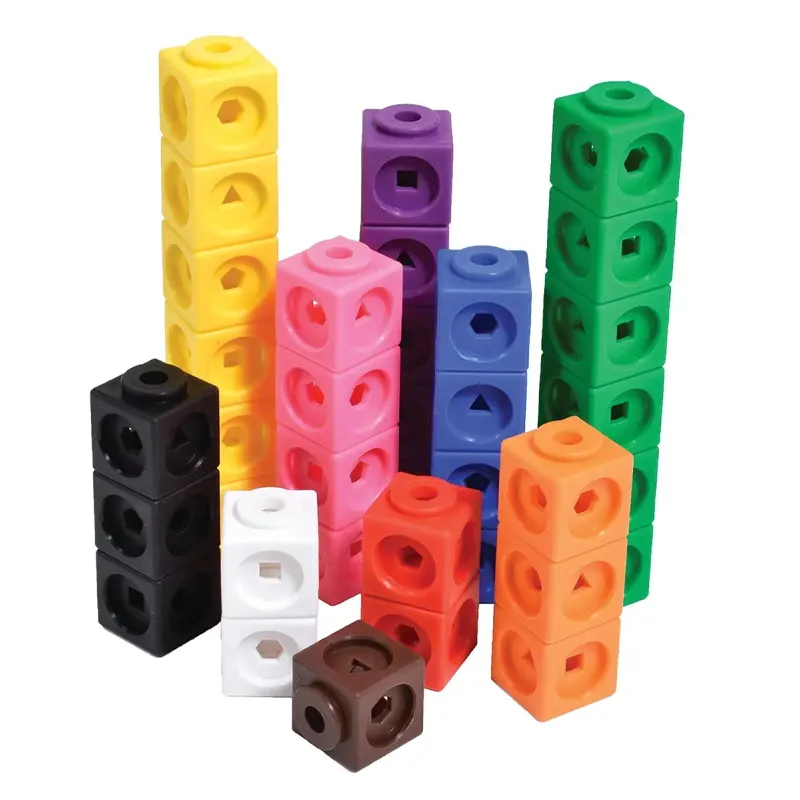
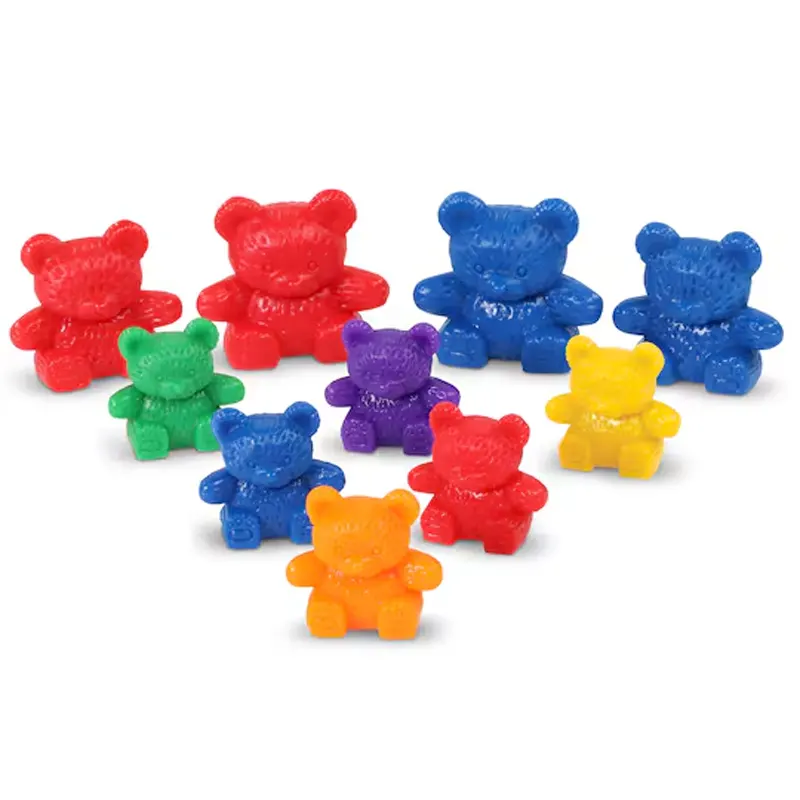
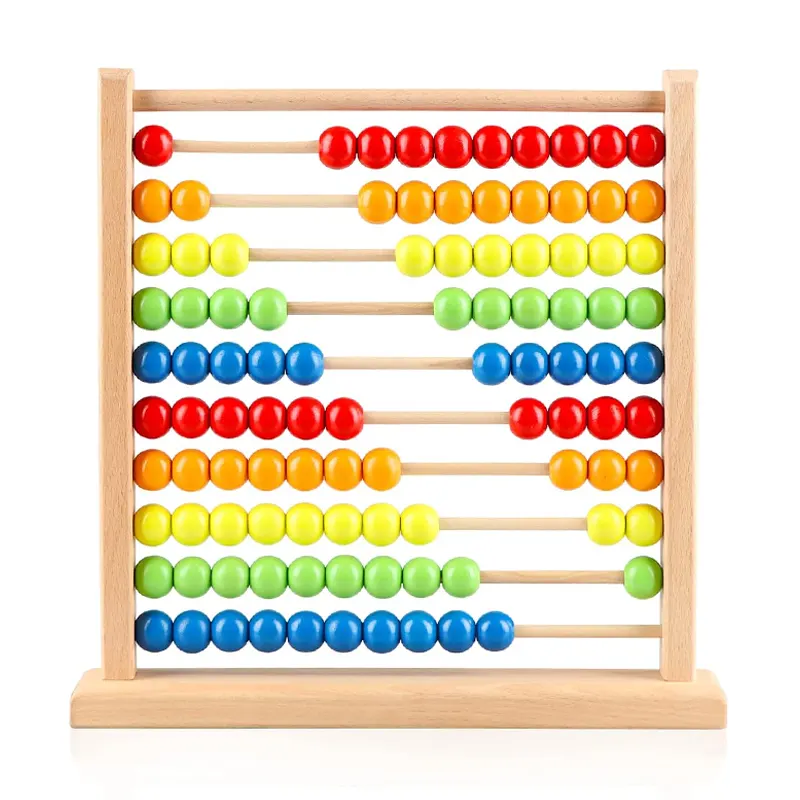
- Khối xây dựng
Open-ended sets like wooden cubes, LEGO® bricks, or foam blocks help children explore spatial awareness, symmetry, and measurement. As they stack and arrange blocks, they practice counting, comparing heights, and experimenting with balance, laying a foundation for geometry and logical thinking. - Counting Bears and Animal Counters
Colorful counters in various shapes and sizes are perfect for practicing counting, sorting, and creating patterns. They support one-to-one correspondence when children place one counter per space while reinforcing color and size classification skills. - Shape Sorters
Shape sorters strengthen geometry skills by encouraging children to match shapes to corresponding holes. This activity enhances recognition of size and form, fine motor coordination, and counting as children track the number of pieces they fit into the sorter. - Abacus
The abacus is a timeless counting tool that supports counting, addition, subtraction, and place value concepts. Sliding one bead at a time reinforces one to one correspondence, and grouping beads helps children visualize mathematical operations in a tactile, engaging way. - Pattern Blocks
Sets of colorful geometric pieces allow children to explore symmetry, tessellation, and pattern-making. These activities build shape recognition, sequencing skills, and problem-solving abilities while promoting creative design thinking. - Measuring Tools and Balances
Child-safe rulers, measuring tapes, and balance scales introduce the concepts of length, weight, and comparison. Children develop estimation, data collection, and reasoning skills through hands-on measurement activities in practical, real-world contexts.
Lớp học lý tưởng của bạn chỉ cách bạn một cú nhấp chuột!
Câu hỏi thường gặp
- What Is One-to-One Correspondence?
One-to-one correspondence is the ability to match each number word to exactly one object when counting. For example, when counting five blocks, a child touches each block once while saying “one, two, three, four, five,” ensuring no items are skipped or counted twice. - When Should Students Start to Learn About One-to-One Correspondence?
Most children begin developing one-to-one correspondence skills between the ages of 3 and 5. Early exposure can start in preschool through simple activities like handing out one snack per child or counting toys during clean-up. - How Can Teachers Support Children Who Struggle with One to One Correspondence?
If a child is having difficulty, start with small sets of objects (3–5) and use hands-on activities that encourage touching or moving each item while counting aloud. Gradually increase complexity as they gain confidence. - Can One-to-One Correspondence Be Taught Through Games?
Yes. Board games, counting races, matching games, and sorting activities make learning more engaging and help children practice the skill in a fun, low-pressure setting. - How Long Does It Take for a Child to Master One-to-One Correspondence?
The timeline varies, but with regular practice and support, most children develop solid skills within a few months of focused learning. - Can Digital Tools Help Teach One-to-One Correspondence?
Yes. Interactive counting apps and online games can supplement physical activities, but hands-on experiences remain essential for deep understanding. - Is One-to-One Correspondence Only for Math Learning?
No. It also supports logical thinking, organization, sequencing, and fairness in social situations—such as sharing items equally.
Phần kết luận
One-to-One Correspondence is far more than a simple counting skill—it is a critical building block for early math understanding and broader cognitive development. When children learn to match each number word to a single object, they gain accuracy in counting and a clearer sense of quantity, fairness, and logical thinking.
By intentionally focusing on one-to-one correspondence in early childhood education, we lay the foundation for strong math performance and a lifetime of curiosity, problem-solving, and joyful learning.

